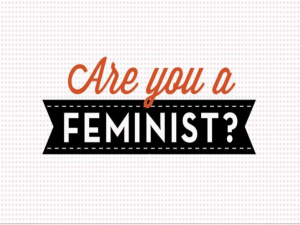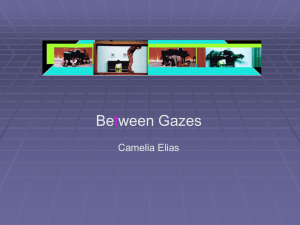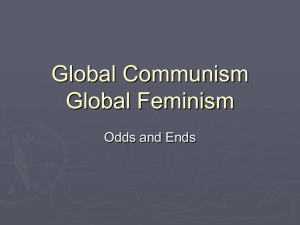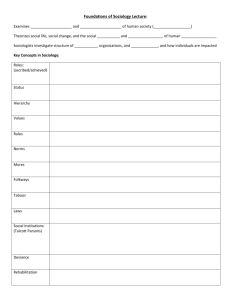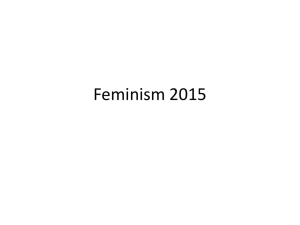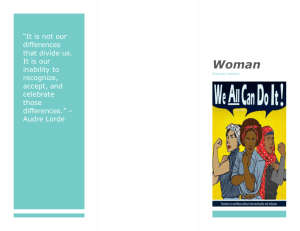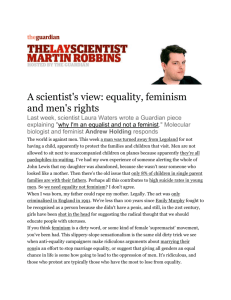Concordia 2012 - Kazi Abdur Rouf
advertisement
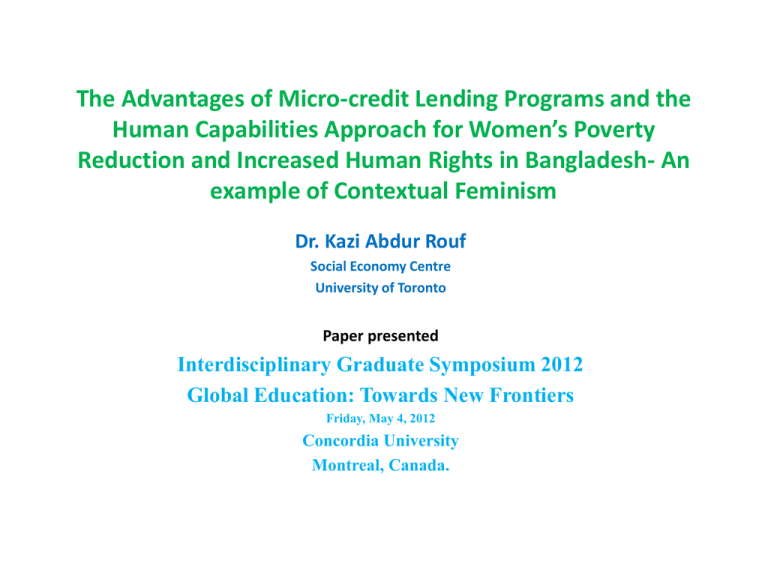
The Advantages of Micro-credit Lending Programs and the Human Capabilities Approach for Women’s Poverty Reduction and Increased Human Rights in Bangladesh- An example of Contextual Feminism Dr. Kazi Abdur Rouf Social Economy Centre University of Toronto Paper presented Interdisciplinary Graduate Symposium 2012 Global Education: Towards New Frontiers Friday, May 4, 2012 Concordia University Montreal, Canada. Problems/Lack of Human Capability Services • Human capability services: education, health and skills development services are not generated • Money lenders exploitations • Lack of access to financial services especially access to credit • • No income generating programs for rural women • Gender inequality: Inequality in family space and community space • Lack of equality in family/kinship resources • Inequity in wages Problems/Lack of Human Capability Services • Forced marriage, dowry marriages and teen marriages • Women trafficking • Depend on male partners income • Violence against women • Affects the basic human rights of these women Consequences • Poor women suffer most in poverty , which s increasing • Depend on others to survive • Patriarchal domination through culture, norms, values, customs, traditions and religion. • Lack of physical, social security and diversity; no social safety net • Lack of physical mobility, economic, cultural and social mobility • Living in miserable and unhygienic conditions • Suffering from injustice and exploitations • Resulting inequality of women human rights Factors effecting women human rights External factors •Post-colonization effect •Globalization •Free market economy •Structural adjustment •Legal laws and systems: court, police and other judicial agencies •Religious fundamentalists customs •Weak civil society •Lack of good governance •Patriarchy Factors effecting women human rights Internal factors Gender inequality in family values • No decision making power • Subordination of male members of the family • No self-actualization •Islamic sharia law •Religious family laws •Customary heritage laws • No land property rights • Patrimonial customs • Dowry Factors effecting women human rights, continue-2 Internal factors Purdah • Discouraged them from working outside of the home • Discourage their physical mobility outside of home, visit markets and other public places • Traditional family values • Gender preferences • Stereotyping mindset • Isolated from community networking Western Feminism • Western women human rights are about women’s equality in their family space and public space with males • Inequity in wages • Fight for against patriarchy for their equality rights for votes and for equity in the workplace • Consciousness raising Strategy • Women sit together and discuss their daily life violence experiences • Gender socially constructed Western Feminism -2 • Gender discrimination • Mainly focus on dismantling of patriarchy • Share sufferings stories in groups regarding unequal status, voices and choices in the society compare to males • Share their sufferings from male torturing, battering, sexual abuse and male subordination. Bangladesh Feminism Perspective • Bangladesh 75% rural women human rights sufferings are about fulfilling their survival needs and dowry • Fulfilling basic need services: food, shelter, clothing, education, health and safety • Focus on massive human rights adult extension education • Poverty reduction Example of Contextual Feminism in Bangladesh • Collateral free group based micro credit scheme for disadvantaged women • GB Sixteen Decisions: inclusion of socio-economic & environmental education • Women form mini-cooperatives • Creates opportunities for these women to earn themselves, educate themselves and overcome poverty • Makes a platform for these neighborhoods women • Husband and wife, bothers/sisters, mother and father together involved in income generating activities and solve the family problems • Act for fulfilling their family members basic needs, and for their economic and social liberation • Become economic actors, community actors, social/civic actors in the family and in the community Comparison Western Feminism vs Contextual Feminism • Consciousness raising strategy vs local dialogue process • Story telling vs group-based mini-cooperative (a platform creation) • White middle and upper class western women vs target marginalized women • Women individual development vs family focus development • Dismantling patriarchy vs holistic development Alternative approaches • WIB approaches • WAD approaches • GAD approaches • EAD approaches • CAD approaches Conclusion: Comparison of Western Feminism and Contextual Feminism • Women liberation strategies should not be uniform for all women • Western feminism and Bangladesh women human rights development strategies are different • It needs to be contextual, place and time specific and • Act on situation and community perspective Suggestions •Facilitate link between women micro borrowers with other community development agencies/women advocacy programs in Bangladesh •Form taskforce committee at the National, District and Sub-district level •Women socio-economic development program through • Department of Women Affairs, • Palli Karma Shahauk Foundation (PKSF) • Credit Development Forum (CDF) • Taskforce action programs through different organizations •Direct legal actions violence against rural women in Bangladesh •Law enforcement at the village level •Post-follow up of the consequences of the legal actions • Set up victims centers at the District and Up-zilla (sub-district) levels Questions/Suggestions Thank You
